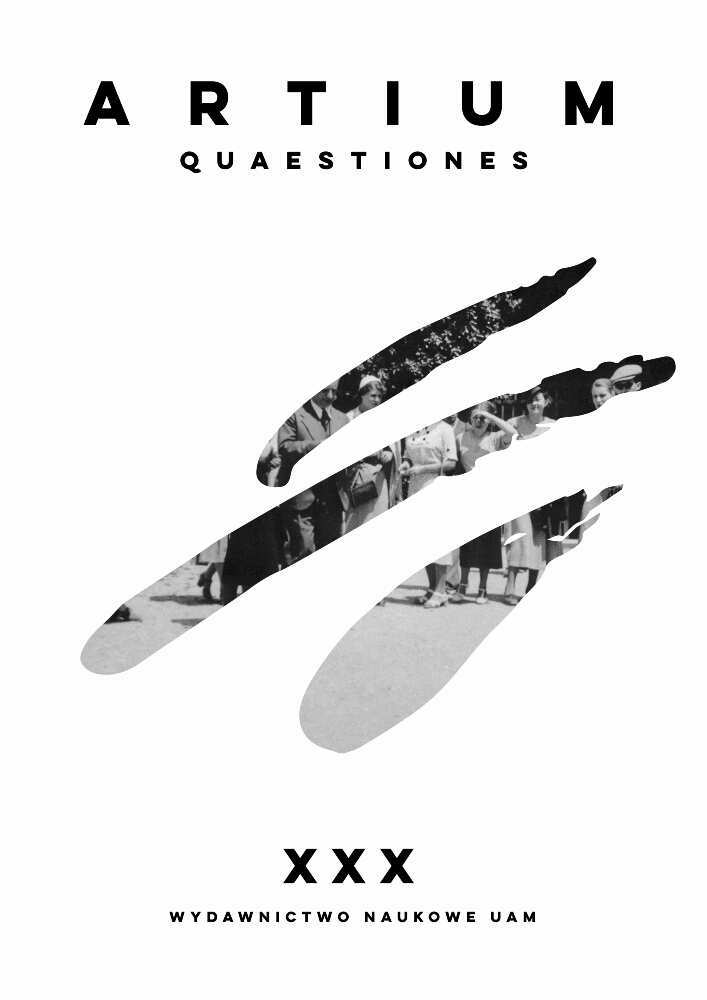Abstrakt
When Aristotle asked at what particular moment we can say that an army is fleeing, which is certainly not when individual soldiers start leaving the battlefield, he formulated a problem that is important also for today’s art history: are there any moments in the history of art that can be called turning points? In individual artistic careers, such points are related to crises, allowing the artist to overcome an impasse and find a way toward reaching a goal. Quite often, such a turn occurs suddenly, at some particular moment which ancient Greeks called the kairos. The changes in art approached en bloc also happen thanks to the background of values and some goal of artistic creation. A turning point may imply overcoming a crisis or a period of decline and decadence – always a state of affairs defined in negative terms. A separate case is definitely a political decree that triggers off a change, which implies violence committed on culture. Finally, in academic art history a turning point may be related not only with a crisis, but also with evolution. It’s perception is relative, but because of that the history of art can be rewritten.
Bibliografia
Agamben G., The Time that Remains. A Commentary on the Letter to the Romans, trans. P. Dailey, Stanford 2005
Aristotle, Posterior Analytics, trans. J. Barnes, Oxford 2002
Aurenhammer H., “Max Dvořák (1874–1921). Von der historischen Quellenkritik zur Kunstgeschichte als Geistesgeschichte,” in: Österreichische Historiker. Lebensläufe und Karrieren 1900–1945, ed. K. Hruza, Wien–Köln–Weimar 2012, vol. 2, pp. 169–200
Bakoš J., “Die epistemologische Wende eines Kunsthistorikers,” in: L’Art et les révolutions, Section 5: Révolution et évolution de l’Histoire de l’Art de Warburg à nos jours, ed. H. Olbrich, Strasbourg 1992, pp. 43–72
Bałus W., “Max Dvořák betrachtet Tintoretto oder über den Manierismus,“ Ars 2011, 44, pp. 26–43
Belting H., Das Ende der Kunstgeschichte. Eine Revision nach zehn Jahren, München 2005
Białostocki J., “Krisen in der Kunst,” in: Über die Krise. Castelgandolfo-Gespräche 1985, ed. K. Michalski, Stuttgart 1986, pp. 162–182
Bielecki S., “Kairos (1),” in: Encyklopedia Katolicka, vol. 8, Lublin 2000, col. 334–337
Dvořák M., “Katakombenmalereien. Die Anfänge der christlichen Kunst,” in: idem, Kunstgeschichte als Geistesgeschichte. Studien zur abendländischen Kunstentwicklung, München 1924, pp. 1–40
Dvořák M., Über Greco und den Mannerismus,” in: idem, Kunstgeschichte als Geistesgeschichte. Studien zur abendländischen Kunstentwicklung, München 1924, pp. 259–276
Dvořák M., Das Rätsel der Kunst der Brüder van Eyck, München 1925
Dvořák M., “Foreword to «Oskar Kokoschka: Variations on a Theme»” [1921], trans. H. Mathews, in: The Expressionist Turn in Art History. A Critical Anthology, ed. K. A. Smith, London–New York 2017, pp. 231–234
Evers H. G., “Historismus,” in: Historismus und bildende Kunst, ed. L. Grote, München 1965 (= Studien zur Kunst des 19. Jahrhunderts, vol. 1), pp. 25–42
Focillon H., Vie des formes, Paris 1934
Hübsch H., In welchem Style sollen wir bauen?, Karlsruhe 1828
Juszczak W., Zasłona w rajskie ptaki albo O granicach „okresu powieści”, Warszawa 1981
Kalinowski L., Max Dvořák i jego metoda badań nad sztuką, Warszawa 1974
Kandinsky W., Concerning the Spiritual in Art, trans. M. T. H. Sadler, p. 13, <http://www.semantikon.com/art/kandinskyspiritualinart.pdf> [last accessed: 13.06.2019]
Karge H., “Renaissance. Aufkommen und Entfaltung des Stilbegriffs in Deutschland im Zuge der Neorenaissance-Bewegung um 1840,” in: Neorenaissance – Ansprüche an einen Stil. Zweites Historismus-Symposium Bad Muskau, Dresden 2001 (= Muskauer Schriften, vol. 4, eds. W. Krause, H. Laudel, W. Nerdinger), pp. 39–66
Kosseleck R., “Einige Fragen an die Begriffsgeschichte von ‘Krise’”, in: Über die Krise. Castelgandolfo-Gespräche 1985, ed. K. Michalski, Stuttgart 1986, pp. 64–77
“Kryzys”, in: Nowa encyklopedia powszechna PWN, Warszawa 1998, vol. 3, p. 586
Kubler G., The Shape of Time. Remarks on the History of Things, New Haven and London 1970
Kuderowicz Z., Biografia kultury. O poglądach Jakuba Burckhardta, Warszawa 1973
Lotman Y., Culture and Explosion, trans. W. Clark, Berlin–New York 2009 (= Semiotics, Communication and Cognition, ed. P. Cobley, vol. 1)
“Przełom,” in: Słownik języka polskiego, ed. W. Doroszewski, <https://sjp.pwn.pl/doroszewski/przelom;5484156.html> [last accessed: 2.05.2019]
Popper K., The Poverty of Historicism, London and New York 1961
Porębski M., Ikonosfera, Warszawa 1972
Porębski M., “Rytmy historii,” in: idem, Interregnum. Studia z historii sztuki polskiej XIX i XX w., Warszawa 1975, pp. 263–293
Rosenauer A., “Das Rätsel der Kunst der Brüder van Eyck – Max Dvořák und seine Stellung zu Wickhoff und Riegl,” in: Wien und die Entwicklung der kunsthistorischen Methode, eds. S. Krenn, M. Pippal (= Akten des XXV. Internationalen Kongresses für Kunstgeschichte, Wien, 4.–10. September 1983, eds. H. Fillitz, M. Pippal, vol. 1), Wien–Köln–Graz 1984, pp. 45–52
Sokorski W., “Kryteria realizmu socjalistycznego,” in: Czas debat. Antologia krytyki artystycznej z lat 1945–1954, vol. 2: Realizm i formalizm, eds. A. Pietrasik, P. Słodkowski, Warszawa 2016, pp. 386–393
Vasari G., The Lives of the Artists, trans. J. Conway Bondanella and P. Bondanella, Oxford 1998
Vico G., La scienza nuova, Milano 1959
Webster’s New Collegiate Dictionary, Springfield, MA, 1980
Woolf V., To the Lighthouse, London 1962
Woolf V., Mrs. Dalloway, London 1960
Licencja
Prawo autorskie regulowane jest oświadczeniem autora przygotowanym przez Wydawnictwo Naukowe UAM a od nr XXVIII także umową licencyjną na publikację online zawartą pomiędzy Autorem i Uniwersytetem im. Adama Mickiewicza. Autorzy ponoszą odpowiedzialność za oryginalność zamieszczanego materiału tekstowego oraz regulację praw autorskich dotyczących materiałów ilustracyjnych. W przypadku, gdy materiały pochodzą od redakcji – odpowiedzialność ponosi redakcja czasopisma.
Ten utwór dostepny jest na licencji Creative Commons Uznanie autorstwa - Użycie niekomercyjne - Bez utworów zależnych 4.0 Międzynarodowe.
